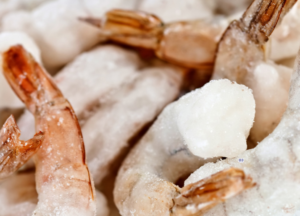The Tarpon Springs, Florida-headquartered Southern Shrimp Alliance (SSA) in the United States has praised the Trump Administration’s imposition of 10-46% duties on countries exporting shrimp (primarily frozen) to the US market. Founded in 2002, the Alliance is an organization of shrimp fishermen, shrimp processors, and other members of the domestic industry in the eight warmwater shrimp producing states of Alabama, Florida, Georgia, Louisiana, Mississippi, North Carolina, South Carolina and Texas.
“We’ve watched as multi-generational family businesses tie up their boats, unable to compete with foreign producers who play by a completely different set of rules,” stated John Williams, executive director of the SSA. “We are grateful for the Trump Administration’s actions, which will preserve American jobs, food security, and our commitment to ethical production.“
According to the SSA, unfair trade policies that disadvantage American shrimpers include billions of dollars in subsidies from international financial institutions to develop shrimp aquaculture outside of the United States, “along with widespread use of forced labor, banned antibiotics and environmental destruction that reduce the cost of shrimp production in major supplying countries.”
The US shrimp industry has suffered significant losses in recent years. Since 2021, the prices of imported shrimp have reportedly dropped significantly, decreasing their value by more than $1.5 billion. This economic downturn has led the US shrimp industry to lose nearly 50% of its market value, forcing many shrimping businesses to close. Despite the falling wholesale prices, retail shrimp prices have remained historically high for consumers, highlighting the disconnect between wholesale and retail markets.

Food Security Concerns
Trump’s tariffs come at a critical moment when 94% of shrimp – and all seafood – consumed in the United States is imported. This extreme import dependence stands in stark contrast to overall US food imports, which account for just 15% of American food consumption, according to the FDA.
“Our government has been outsourcing our food supply to companies engaged in practices we would never accept on American soil,” said Williams. “Without quickly addressing unfair trade, we are choosing a food supply chain that is fully outsourced to industries that engage in horrible practices. If we wait for systemic reforms, we will lose our domestic shrimp industry.”
The new duties are expected to slow imports and prevent Americans from becoming completely dependent on foreign shrimp producers while the administration addresses harmful trade policies and enforcement deficiencies.
Subsidized Foreign Competition
The SSA reports that international financial institutions, supported by US government funds and taxpayer dollars, have invested billions of dollars into foreign shrimp aquaculture development, thus “helping multinational companies rapidly displace the well-regulated US shrimp industry.”
The total number of shrimp and aquaculture development projects increased significantly in the past decade, primarily in India and Ecuador, which supply nearly 70% of all US shrimp imports and are the largest competitors to the US shrimp industry.
Ecuador alone received over $550 million in development funding for shrimp farming since 2000, calculates the SSA, with $195 million going directly to private companies competing with US shrimpers.
“This investment helped fuel a staggering 150% increase in Ecuadorian shrimp exports to the US in just four years. Similar funding has gone to other major producers like India, Indonesia, and Vietnam, creating a global shrimp oversupply,” according to a post at the Southern Shrimp Alliance website.
Suppliers from the top six supplying nations accounted for 96% of all US shrimp imports, as detailed below:
• India (42.3%) – tariff rate of 26%
• Ecuador (26.9%) – tariff rate of 10%
• Indonesia (15.4%) – tariff rate of 32%
• Vietnam (7.2%) – tariff rate of 46%
• Thailand (2.4%) – tariff rate of 36%
• Argentina (2.1%) – tariff rate of 10%
No other country accounts for more than 2% of import volume.





